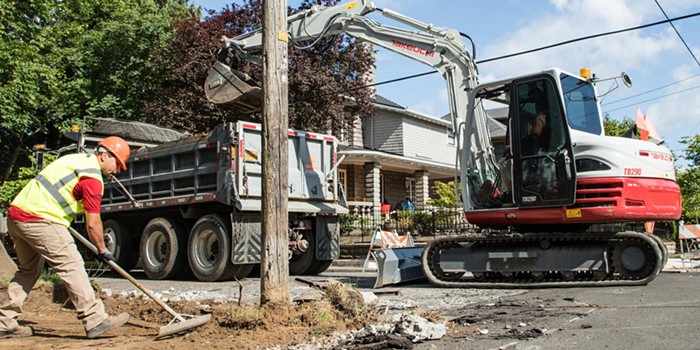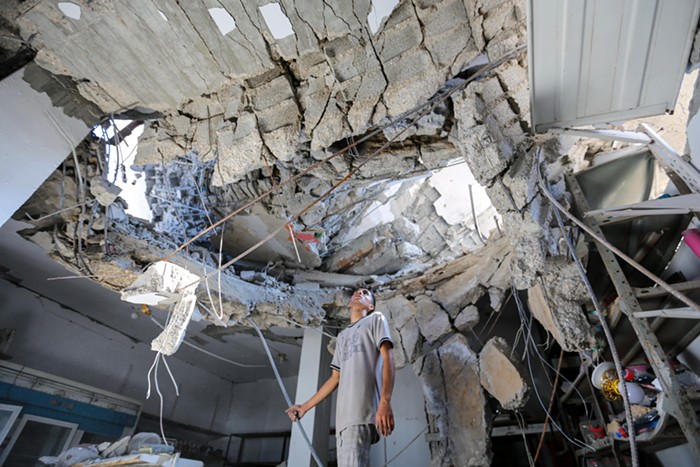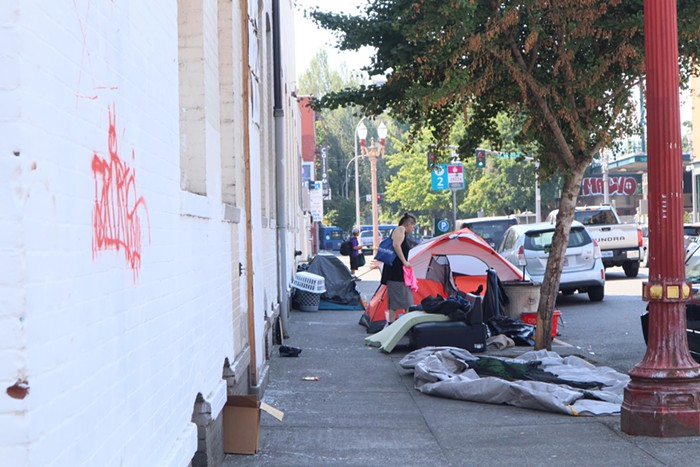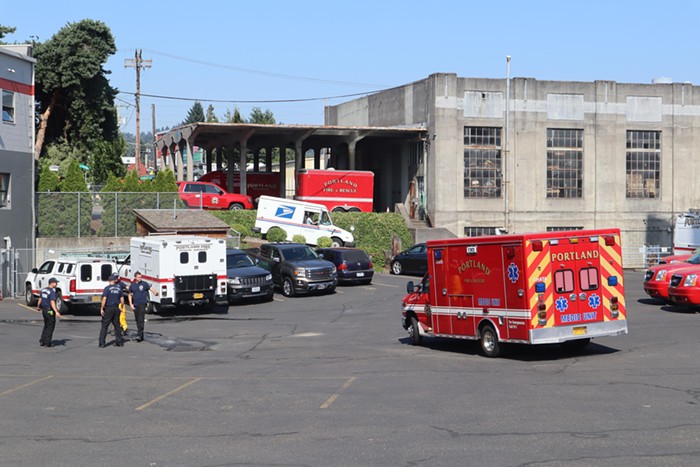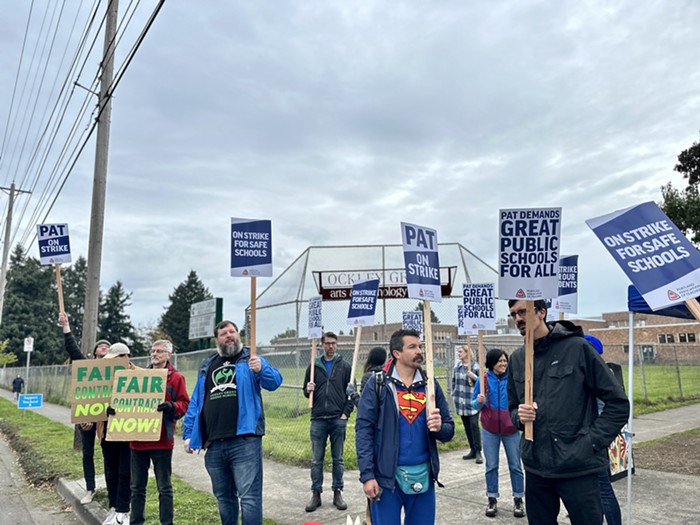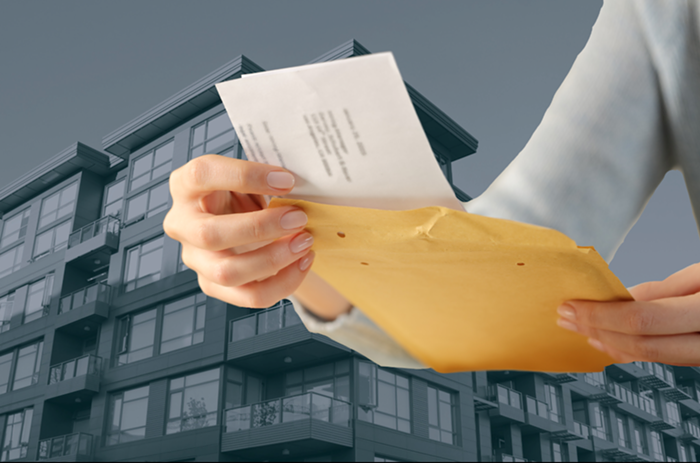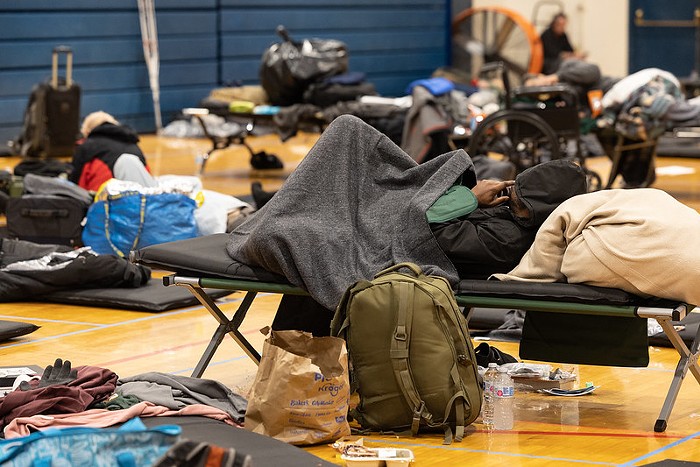PORTLANDERS HAVE heard it before, but it bears repeating: We're doomed. The earth beneath our feet is crumbling, and if it suddenly slips...
Children will die in the rubble of devastated public schools. Workers will die in offices built inside un-reinforced brick buildings. Should we survive, we might find ourselves stranded, perhaps without enough fuel or food. Even our beloved green spaces would be doomed. Picture Forest Park ablaze, with the flames racing from near the foot of a collapsed St. Johns Bridge, and the air and water filling with oil and toxic chemicals that have erupted from destroyed tank farms along the Willamette River.
Of course, this is dramatic imagery. But as earthquake experts reminded a room full of building professionals in Portland, before the State staged its largest earthquake drill ever, the Great Oregon Shakeout, last week: it's entirely plausible. They urged the crowd to take seismic safety as seriously as sustainability.
All a massive earthquake will require, experts say, is a good amount of shaking along the nearby Cascadia subduction zone. Soil along the riverbank could liquefy, splitting apart poorly anchored fuel containers and chemical tanks near Linnton. Any spark, and the fuel could catch fire, quickly spreading to the nearby park—and out of reach of emergency workers pinned down at other hot spots and forced to navigate around critically damaged lifelines like bridges and overpasses. Meanwhile, recovery could be further hampered should the Olympic Pipeline—a major fuel line for the city—snap.
Remember the giant 8.8 magnitude quake that struck Chile less than a year ago? A similar subduction quake here could leave Portland reeling, unable to match what many say was a quick recovery by the South American country. Some forecasts predict a Oregon quake could kill as many as 5,000, while costing the state some $70 billion—about 40 percent of the state's gross domestic product.
"A magnitude 9 Cascadia earthquake is actually the biggest hazard we face here in Oregon," said Yumei Wang, the geohazards team leader for the Oregon Department of Geology and Mineral Industries, speaking at a January 18 luncheon a week before 37,000 Oregonians participated in the shake out.
The Cascadia subduction zone sits beneath the Pacific Coast from Northern California to British Columbia. It's where a chunk of the earth's crust called the Juan de Fuca Plate is slowly sinking beneath another piece, the North American Plate. Part of the zone is as close as 30 miles from Portland. A remarkably similar zone caused the Chilean quake, which killed "only" about 500 people and wrought $30 billion in damages—numbers that could have been much worse if Chile hadn't had a long history of enforcing strict building standards.
Even so, said Wang, who visited Chile, the ground there liquefied from the shaking, snapping oil pipelines and pulling apart fuel tanks. And a recently expanded bridge collapsed onto train tracks below, knocking out both a vital rail corridor and a highway comparable to I-5.
Oregon might not fare so "well," said Wang, at part of a series of earthquake drills marking the 311th anniversary of a magnitude 9 subduction quake in the Cascadia Subduction Zone. Despite the risk, there just isn't enough money available to shore up a series of "$1 billion problems" facing the state's energy sector, transportation system, and schools.
"Our building codes are always what we think needs to be done today, but we always learn more," Wang said, contrasting buildings—rarely overhauled once erected—with cars that get new safety features each year because of public demand.
But any kind of progress is decades away. Current seismic work at police stations, firehouses, hospitals, and other emergency centers won't be finished until 2022. Mayor Sam Adams' plan last year to buy a $10 million plot of land to use as an emergency staging area for the Big One fell through. It will take an additional decade to properly prepare large schools for earthquakes.
Statewide, there are nearly 1,000 schools, serving a total of 300,000 students, which face either a high or very high risk of collapse. In Stumptown, many school buildings—like most buildings in the city, in fact—were constructed before the state enacted stricter seismic codes in 1994. According to Ted Wolf, a school safety advocate and sustainability writer, about 16,000 students attend these riskiest schools, along with thousands more teachers, administrators, and volunteers.
Shoring up schools isn't just about protecting students and teachers, Wolf said. Schools are useful as shelters or information centers in the wake of a disaster.Architects and engineers, says Wolf, need to treat seismic safety standards as points of pride, just as important as "green" features like bioswales and solar panels.
"Resilience is not the word when you''re considering Portland Public Schools," says Wolf. "It''s a problem for our entire city."
Kent Yu, a member of the Oregon Seismic Safety Policy Advisory Commission, is more blunt. He says resilience itself is "sustainable." The fewer collapsed buildings you have to clear, for example, the less construction waste you create in reconstruction.
"If you build a building with a resilient structure, after an earthquake you don't have to rebuild," he said. "Right now our situation is a big mess."

